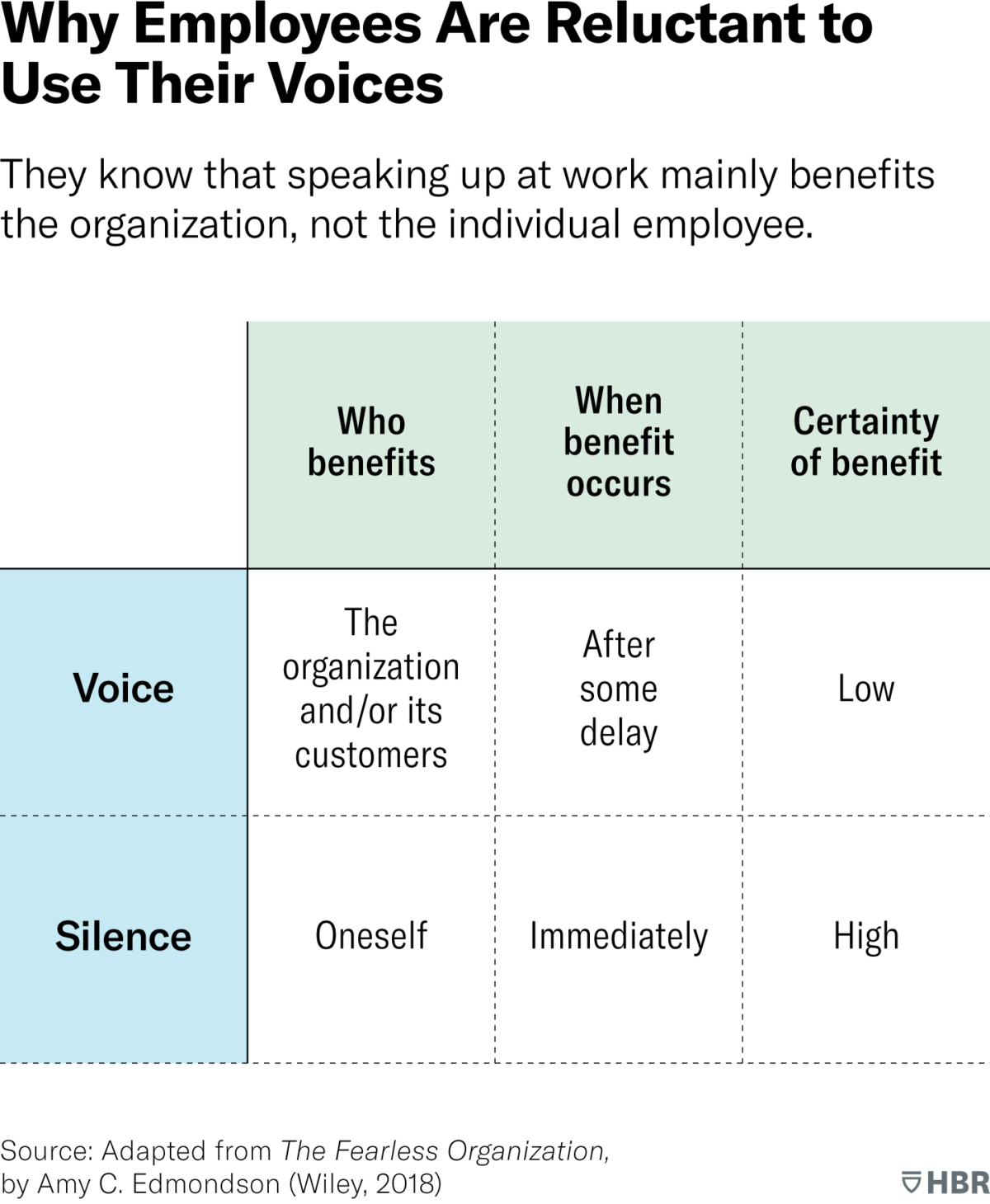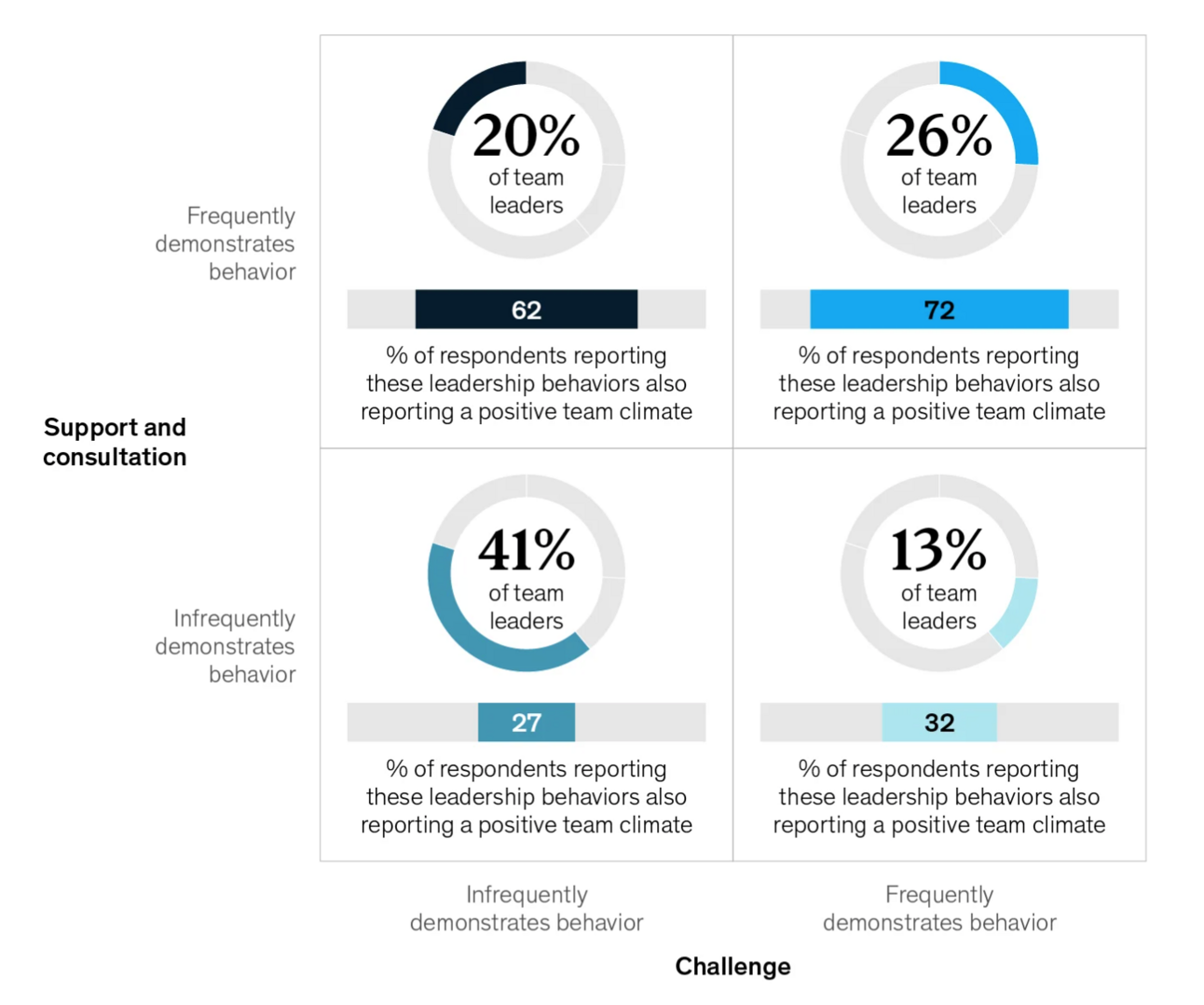The Hidden Middle: Why Most Workplaces Stay “Okay”
Here’s what awaits you today:
- Uncovering the hidden barriers that prevent organisations from achieving truly high-performing teams.
- Exploring the latest research on driving high performance in knowledge work environments.
- Outlining the solution to overcome these barriers and setting the stage for actionable change.
You’ve probably noticed that most workplaces aren’t toxic disaster zones. Yet, they’re not exactly buzzing hives of inspiration, either. They’re somewhere in between—let’s call them “psychologically neutral”.
So, what’s holding us back from making them better?
The Invisible Barriers of the Everyday Office
Picture Sarah. She’s got a brilliant idea for streamlining a process at work. Her boss, Mike, is a decent guy, never harsh, and generally supportive. They get along well. Despite this, Sarah doesn’t mention her idea. She worries that it might not land as well as she wants, that she might have missed something, or that she’ll be assigned work she doesn’t need if she’s tasked with fixing the process herself!
Days turn into weeks, and despite this idea being beneficial for the organisation, it never gets shared. Sarah’s idea, full of potential, just fizzles out. That’s psychological neutrality in action. It’s not that the workplace is unsafe or hostile, or that Mike is a bad manager—it’s that it’s not consistently encouraging either.
Mike has underestimated the natural biases and factors that prevent risk-taking present in teams. So what are the factors that prevented this idea from flourishing:
Barrier One: The Fear Factor
Even in a calm environment, if there’s any risk of losing face or social standing, most people will keep quiet. Why stick your neck out if it might cost you a promotion or your peers’ respect? In many workplaces, the mere thought of giving any feedback or suggesting a change to a manager can be enough of a risk that it isn’t worth taking.
An interesting study exploring this concept found that exactly what Sarah experienced is commonplace. It found that employees who had managers they respected, who they got along with well, and who they believed would provide a positive response if they spoke up, would often still not speak up or suggest ideas. Even when they agreed with the interviewer that this behaviour was irrational, they still would not speak up. Why take any risk, no matter how small if things are going well and you’re liked and respected?
Without a doubt, staying silent is the safest option on an individual level as it avoids any risk. However, as seen in the image below, what is safest on the individual level inevitably leads to poor outcomes at the organisation level. Innovation is stifled, growth slows, and everyone begins to feel trapped in the status quo, unable to discuss real change or real issues.

We’ve stumbled into a collective action problem. The rational choices of individuals, that is staying silent, have contributed to an organisation-wide situation that no one is happy with. As leaders, it is our job to recognise this problem and find ways to make the workplace feel safe enough that employees can overcome it.
Important Note: If you are in a leadership position, likely, you do not abide by a “better safe than sorry” mentality, and thus underestimate the amount of other people who do. Consider that this is a potential blind spot due to having a “leader’s mindset” and that not everyone shares this.
Barrier Two: Unintended Neglect
When leaders, like Mike, focus on answering questions, providing advice, and assisting team members and don’t regularly and explicitly take time to seek out innovative ideas, seek knowledge from team members, and ask for genuine feedback, it sends a clear (and unintentional) message:
“I know better, your ideas aren’t that important, I have all the answers, I make the changes around here.”
This lack of action on the part of leaders discourages future input and innovation. An imbalance in these skills has led to a hierarchical structure where leaders are the ones with the answers, and everyone else is best to follow along quietly.
Alternatively, consider the following scenario, a team member comes to you with an idea or suggestion, and you tell them “you’ll think about it”. Among the myriad of tasks that pile up, you forget to follow up with them. This common scenario that most managers can relate to, is often enough that a team member may never suggest another idea to you again. They quickly conclude that “speaking up is pointless” and are unlikely to take another risk after the disappointment of being ignored. A minor slip in memory has led to a potentially multi-year-long loss of ideas and valuable input from a team member.
In a survey of 3500 employees in knowledge work fields, HBR found that bosses not closing the loop led to a 30% increase in employees feeling that “speaking up is pointless.”
However, all the ideas you don’t hear, the problems that aren’t brought up, and the feedback that isn’t given remain hidden from view. The potential that was missed out on cannot be measured in any metric or KPI, and so goes unnoticed.
These two examples highlight the dangers of unintended neglect and showcase just a few of the common scenarios where it occurs. However, while avoiding unintended neglect would be nice, it is almost an impossibility if you want to remain efficient and productive. For instance, it is not feasible to explicitly ask every person in every single meeting for their detailed opinions and thoughts. In the next issue, we will dive into effective solutions to this common problem.
Barrier Three: The Comfort Zone Conundrum
Imagine a workplace that’s always smooth sailing—everything is easy and comfortable, and there’s never any conflict. It sounds ideal, but in reality, this comfort can create a trap. In such places, the fear of rocking the boat means tough, growth-inducing conversations are off the table. People don’t feel they can give genuine feedback, ideas that will never go ahead are met with polite nods and vague feedback, and team members aren’t held accountable to high standards for fear of crossing boundaries or upsetting them. This false sense of comfort inevitably leads to stagnation, where underlying issues simmer and growth opportunities are missed.
In our quest to build supportive workplaces, it’s easy for the pendulum to swing too far into comfort and coddling. The goal of any organisation is to achieve something meaningful in a cost-effective way. To this end, a truly supportive workplace is one that provides individuals and teams with the tools to build something of value. This doesn’t mean removing hurdles, challenges, or conflict.
Instead, it means creating environments that allow teams to tackle challenges fearlessly and for productive conflict to occur. The goal is to provide the support necessary for team members to become the best version of themselves possible, and often growth is by necessity uncomfortable.
As the below research shows, leaders who challenge their employees in productive ways, whether or not frequently demonstrate high or low levels of support and consultation, consistently report positive team climates.

Therefore, the comfort zone conundrum is a key barrier to overcome, raising the question of how to provide supportive environments without straying into coddling.
What’s the Solution?
As evidenced, it’s easy to fall into the trap of becoming a psychologically neutral workplace, which can happen without any outward signs of dysfunction or loss of productivity. The question now is what’s the alternative, and how do we get there?
What does the research say?
Google’s Project Aristotle was a multi-year research project aimed at determining exactly what makes a high-performing team. They analysed data from hundreds of teams within the company to try and answer this question.
Interestingly, they specifically found that individual ability or “superstars” within the team were not a strong contributing factor to a high-performing team. What they did find was that “psychological safety” was undoubtedly the strongest factor in predicting high-performing teams.
They also found that high-performing teams were not predicted strongly by any individual traits. It did not matter if teams were made up of friends or strangers, the structure or hierarchy didn’t matter, and combinations of different personality traits didn’t matter. Essentially, when it comes to knowledge work, the “who” factor didn’t matter in high-performing teams.
What this means is that if you want to drive a high-performing team, “psychological safety” should be your number one focus. Don’t focus on finding superstars or the perfect combination of people, focus on building healthy group dynamics, specifically that of psychological safety.
What is Psychological Safety?
“Psychological safety is the ability for members of a team to take risks without fear of negative consequences to self-image, status, or career.”
In practice, psychological safety looks like the opposite of neutrality. It is everyone freely asking questions, admitting mistakes, proposing ideas, giving criticism, taking risks, and seeking feedback without ever having to second guess if these behaviours will lead to any reputational consequences.
It means a workplace where people have productive, tough conversations.
It means being ‘fearless’, where this is reducing interpersonal fear, not reducing fear about the future or outcomes.
It is not synonymous with being ‘nice’, it does not imply ease or comfort, it is about productive conflict.
It must be combined with high standards and accountability to create an environment of learning and productive work.
It means a workplace where a leader can be challenged by anyone and where every idea is open to genuine debate.
Interestingly, it is a dynamic that exists purely within a group or team, it isn’t a personality trait or something any individual can possess. This means psychological safety can vary wildly from team to team, or meeting to meeting, depending on the make-up of each group at the time. This means building psychological safety requires constant work in numerous settings for it to impact across an organisation.
Important Note: Just because everyone should have the right to speak up or voice concerns, it does not remove the responsibility to communicate productively and provide a thoughtful opinion. Additionally, providing thoughtful feedback earns the right to be heard, not the right to expect change.
Conclusion
Understanding the barriers to psychological safety is the first step in transforming a workplace from “just okay” to truly thriving. It’s about creating a culture where everyone feels safe to speak up, challenge ideas, and engage in productive conflict.
We’ve seen how the Fear Factor, Unintended Neglect, and the Comfort Zone Conundrum can hold back even the best intentions. In our next issue, we’ll dive into practical strategies to overcome these barriers and build a genuinely psychologically safe workplace.
Remember, the goal isn’t just to avoid being psychologically unsafe but to actively create an environment where everyone feels empowered to contribute and grow. Stay tuned!



